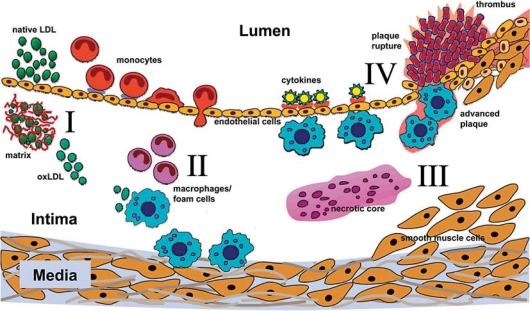Fig. 1.
Steps in the progression of atherosclerosis. Step I: LDL particles accumulate in the sub-endothelial cell layer and become trapped within matrix proteins, where they are oxidized (oxLDL) by cell-derived reactive oxygen species. Step II: Chemotactic and growth factors stimulate monocytes to transmigrate across the endothelial cell layer and differentiate into macrophages. Macrophages engulf the oxLDL, leading to foam cell formation. Step III: Foam cells produce a variety of mediators and eventually undergo apoptosis or necrosis, contributing their contents to a growing core of cellular debris and cholesterol. This process is accompanied by the migration of smooth muscle cells into the intima from the media and the formation of a fibrotic cap. Step IV: As the advanced lesion continues to grow, it becomes increasingly unstable and prone to rupture, which can result in a thrombus or clinical event such as MI or stroke.

